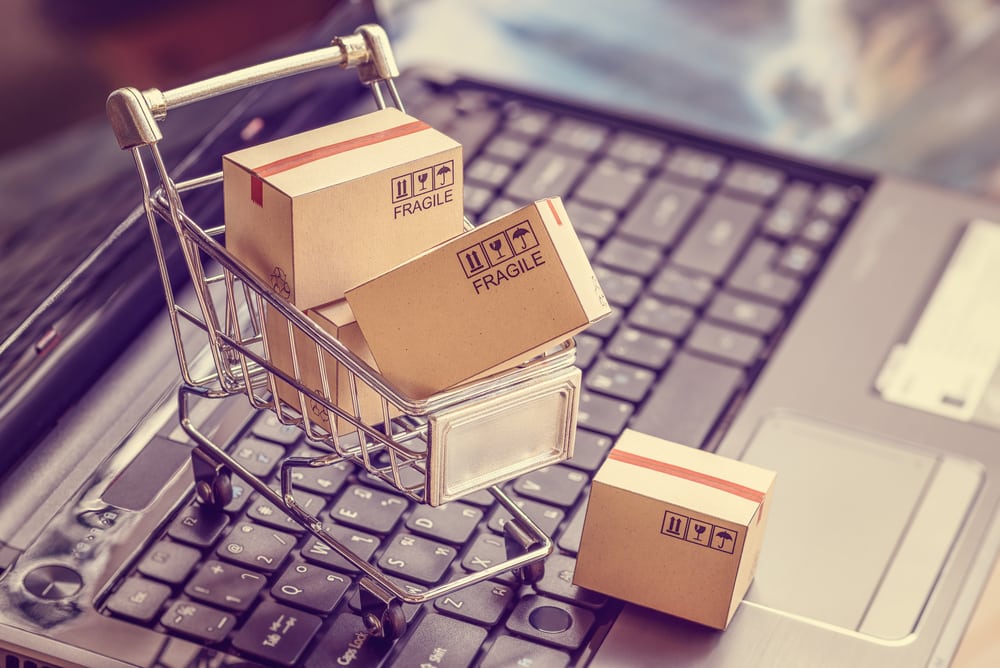Online Shopping Trends: Looking Beyond 2021 to the Future of Your Business

The year 2020 changed a lot about the world, but nowhere were those changes felt quite as much as the retail sector. Businesses that were able to quickly adapt (or expand) to serve customers with convenient online sales and products shipped directly to homes were the ones that could weather the COVID-19 storm.
There are a lot of things that might go back to “normal” with the end of the pandemic, but online shopping is not going to be one of them. Here’s a look at online shopping logistics trends that businesses should expect and prepare for in 2021 and beyond.
Customer Experience Wins
One of the most important transformations over the past several years is the increasing focus on the consumer experience. From start to finish, companies are looking at ways to make it easier for their customers to interact with the brand. It includes everything from the website browsing and navigation to product reviews, the purchasing process, and even returns.
With a significant rise in online shopping companies have to be able to facilitate transactions when customers cannot see, touch, and try on the things they want to buy. It requires significant attention to detail and a relentless focus on how consumers will engage with a brand, including:
- Detailed product descriptions
- Product photos
- Specifications and details
- Shipping information
- A comprehensive returns policy
- Helpful customer service
It also requires a fully developed reverse logistics process. Most businesses don’t like the idea of returns, but the reality for an online-first shopping experience is that a significant portion of sales will eventually need to be returned, repaired, or exchanged. Studies show that online returns are about four to five times higher than returns for products purchased in a store, and as much as 40% of items purchased online will eventually be returned. The total cost of returns is more than $1 trillion a year, and will likely go up. That is a lot of products moving backward through your logistics process, and companies have to be prepared to make that experience just as good as the shopping and forward logistics processes.
Companies that have a comprehensive and convenient returns policy and the ability to track and manage returns will be better prepared to delight online shoppers with a better overall experience, even when it involves returned products.
Logistics Goes Forward and in Reverse
As mentioned above, reverse logistics is increasingly essential as part of your overall retail sales process. Many retailers have spent years perfecting the forward logistics process to ensure that products are quickly shipped to consumers after an online purchase. Since as many as four in 10 items purchase will be returned, the next thing companies have to work on is how to get it back just as efficiently.
Reverse logistics requires the right tools, including software to help you:
- Initiate the returns process
- Review and approve return requests to avoid fraud
- Create shipping labels that allow you to track items from the customer’s home back to your warehouse or store
- Keep the customer informed every step of the process
- Quickly approve and process refunds or exchanges
- Complete warranty repairs efficiently and get products back to the customer
You should be spending just as much time streamlining the reverse logistics process as the forward logistics one in your retail sales business.
Analytics Isn’t a Luxury
Analytics used to be considered a niche part of business operations, but today it goes well beyond that. It is an essential tool to manage current business operations and be able to predict your needs in the future. The right analytics tools integrate seamlessly into your current software to help you understand your customers’ buying habits. It can also help you identify trends in reverse logistics so you know what’s being returned and why.
In addition to having this information, companies need software that makes it easy to extract, review, and analyze it. Software platforms must be integrated with information about sales and returns to provide useful data that allows you to make effective business decisions.
Convenience and Integration Matter for Your Business
The online sales, shipping, and reverse logistics processes are not linear. Retailers need a 360-degree view of operations that optimizes every step. Many ecommerce stores have advanced online sales and forward logistics, which need to be integrated with reverse logistics and disposition management platforms. This integration ensures that every product sale is dealt with in the most effective manner.
- Products sold to happy customers are quickly packaged and shipped
- Products that need to be exchanged are approved and exchanged immediately
- Products that require a refund can be processed to determine whether they can be restocked and resold
- Products that cannot be resold can be disposed of in the best and most cost-effective way, including returned to your vendor, refurbished for resale on clearance, recycled, or sent to a landfill
Without a fully integrated, omnichannel returns platform, your team will spend too much time trying to track down returned products and manually process them.
Be Prepared for the Future of Retail Shopping Online
ReverseLogix is a fully integrated platform that enables efficient processing, tracking, and reporting for reverse logistics in retail ecommerce sales. Find out more about how easy it can be to optimize this part of your supply chain by scheduling a demo today.
